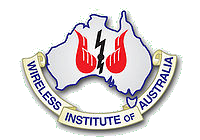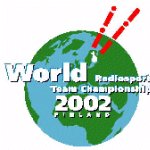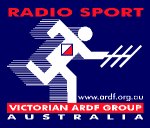Automatic Link Establishment, commonly known as ALE, is the worldwide de facto standard for digitally initiating and sustaining HF radio communications. ALE is a feature in an HF communications radio transceiver system that enables the radio station to make contact, or initiate a circuit, between itself and another HF radio station or network of stations. The purpose is to provide a reliable rapid method of calling and connecting during constantly changing HF ionospheric propagation, reception interference, and shared spectrum use of busy or congested HF channels.

The Wireless Institute of Australia (WIA) was formed in 1910, and is the first and oldest national amateur radio society in the world. It represents the amateur radio operators of Australia as the AR "peak body" in dealings with the Australian Communications and Media Authority (ACMA), the authority under the government of Australia that administers communications within and external to Australia. The WIA publishes a bi-monthly journal for its membership called Amateur Radio. The organisation is the national society representing Australia in the International Amateur Radio Union. The WIA holds regular meetings with the ACMA to inform the Authority on matters concerning the Australian amateur radio community.

The International Amateur Radio Union (IARU) is an international confederation of national organisations that allows a forum for common matters of concern to amateur radio operators worldwide, and collectively represents matters to the International Telecommunication Union (ITU). The International Amateur Radio Union was founded in 1925 and, as of July 2021, it is composed of 172 national member societies.

Field Day is an annual amateur radio contest, widely sponsored by IARU regions and member organizations, encouraging emergency communications preparedness among amateur radio operators. In the United States, it is typically the largest single emergency preparedness exercise in the country, with over 30,000 operators participating each year. Field Day is always the fourth full weekend of June, beginning at 18:00 UTC Saturday and running through 20:59 UTC Sunday.

Contesting is a competitive activity pursued by amateur radio operators. In a contest, an amateur radio station, which may be operated by an individual or a team, seeks to contact as many other amateur radio stations as possible in a given period of time and exchange information. Rules for each competition define the amateur radio bands, the mode of communication that may be used, and the kind of information that must be exchanged. The contacts made during the contest contribute to a score by which stations are ranked. Contest sponsors publish the results in magazines and on web sites.

Amateur radio direction finding is an amateur racing sport that combines radio direction finding with the map and compass skills of orienteering. It is a timed race in which individual competitors use a topographic map, a magnetic compass and radio direction finding apparatus to navigate through diverse wooded terrain while searching for radio transmitters. The rules of the sport and international competitions are organized by the International Amateur Radio Union. The sport has been most popular in Eastern Europe, Russia, and China, where it was often used in the physical education programs in schools.
Like most other sports, amateur radio contesting has its share of disputes and controversy. These disputes are long-standing and may see no thorough resolution for a long time. They are presented for their informational value, with the positions in dispute summarized. There are several online forums where these topics are discussed.

The World Radiosport Team Championship is an amateur radio competition. Participation is by invitation only. Entry to each quadrennial WRTC requires qualification through high positions in major world radio contests. The main principle of the WRTC is to provide a level playing field for the qualified contestants from around the world to compete against one another using amateur radio stations located in areas with the same propagation terrain and equipped with identical antennas, operating under the keen eyes of qualified referees. Each WRTC event is organised by a volunteer group of Radio Amateurs in the locality where the competition will be held with the help of a standing committee of internationally recognized contesters. The WRTC is the closest thing to a world championship in the sport of radio contesting. In 2018 over 1000 people are involved with a cost of over half a million Euros. WRTC2018 web page
The Friendship Radiosport Games (FRG) is an international multi-sport event that includes competitions in the various sports collectively referred to as radiosport. The Friendship Radiosport Games began in 1989 as a result of a sister city agreement between Khabarovsk, Russia and Portland, Oregon, United States. Since then, participation has been extended to other sister cities in the Pacific Rim. The Friendship Radiosport Games are generally held in the month of August.
Fox Oring is a variation of the sport of Amateur Radio Direction Finding. Fox Oring is a timed race in which individual competitors use a topographic map and a magnetic compass to navigate through diverse, wooded terrain while searching for radio transmitters. The term is derived from the use of the term fox hunting to describe recreational radio direction finding activity and an abbreviation of the word orienteering.

The Trinidad and Tobago Amateur Radio Society, Inc. (TTARS) is the national amateur radio organization in the Republic of Trinidad and Tobago. It is a member society of the International Amateur Radio Union (IARU).
Summits On The Air (SOTA) is an amateur radio operating award program launched in Great Britain in 2002 by John Linford.
The World Administrative Radio Conference (WARC) bands are three portions of the shortwave radio spectrum used by licensed and/or certified amateur radio operators. They consist of 30 meters (10.1–10.15 MHz), 17 meters (18.068–18.168 MHz), and 12 meters (24.89–24.99 MHz). They were named after the World Administrative Radio Conference, which in 1979 created a worldwide allocation of these bands for amateur use. The bands were opened for use in the early 1980s. Due to their relatively small bandwidth of 100 kHz or less, there is a gentlemen's agreement that the WARC bands may not be used for general contesting. This agreement has been codified in official recommendations, such as the IARU Region 1 HF Manager's Handbook, which states: "Contest activity shall not take place on the 5, 10, 18 and 24 MHz bands."
The Chinese Radio Sports And Orienteering Association (CRSAOA) is a national non-profit organization for amateur radio enthusiasts in the People's Republic of China. The CRSA's primary mission is to popularize and promote amateur radio in China. Early activities of the organization focused on radiosport, and the CRSA was active in promoting Amateur Radio Direction Finding and High Speed Telegraphy competitions throughout the country. Although the CRSA has broadened its scope and now supports many kinds of radio activities, the organization's name continues to reflect this early heritage. Key membership benefits of the organization include QSL bureau services, a quarterly membership magazine called Ham's CQ. CRSA was also responsible for the administration of the amateur radio license certification program in the People's Republic of China until 2010.Former Chinese Radio Sports Association.
The Radioamateurs du Luxembourg (RL), originally founded in 1937 as Réseau Luxembourgeois des Amateurs d'Ondes Courtes, is a national non-profit organization for amateur radio enthusiasts in Luxembourg. RL supports amateur radio operators in Luxembourg by operating the RL QSL Bureau for those members who regularly communicate with amateur radio operators in other countries, sponsoring amateur radio operating awards and radio contests, and supporting radio propagation beacons in Luxembourg. RL represents the interests of amateur radio operators in Luxembourg before local and international telecommunications regulatory authorities. RL is the national member society representing Luxembourg in the International Amateur Radio Union.
The Belarusian Federation of Radioamateurs and Radiosportsmen is a national non-profit organization for amateur radio enthusiasts in Belarus. The organization uses BFRR as its acronym, based on the standard Romanization of the Belarusian name of the organization. The name of the organization reflects an early purpose of the organization: to support radiosport activities within Belarus. In addition to High Speed Telegraphy and Amateur Radio Direction Finding, BFRR now supports a wide variety of amateur radio activities. Key membership benefits of BFRR include the sponsorship of amateur radio operating awards and radio contests, and a QSL bureau for those members who regularly communicate with amateur radio operators in other countries.
The Mongolian Radio Sport's Federation is a national non-profit organization for amateur radio enthusiasts in Mongolia. Early activities of the organization focused on radiosport, and the MRSF was active in promoting Amateur Radio Direction Finding competitions throughout the country. MRSF supports local competitions in Amateur Radio Direction Finding as well as a national team that travels to regional and world championship events. Although the MRSF has broadened its scope and now supports many kinds of radio activities, the organization's name continues to reflect this early heritage. MRSF represents the interests of Mongolian amateur radio operators before Mongolian and international telecommunications regulatory authorities. MRSF is the national member society representing Mongolia in the International Amateur Radio Union.
The Kazakhstan Federation of Radiosport and Radio Amateur is a national non-profit organization for amateur radio enthusiasts in Kazakhstan. KFRR promotes amateur radio in Kazakhstan by sponsoring amateur radio operating awards and radio contests. The KFRR organizes and supports Amateur Radio Direction Finding competitions and the Kazakhstan national ARDF team. The KFRR also represents the interests of Kazakhstan amateur radio operators before Kazakhstan and international telecommunications regulatory authorities. KFRR is the national member society representing Kazakhstan in the International Amateur Radio Union, which it joined on February 10, 2009.
In amateur radio, high-speed telegraphy (HST) is a form of radiosport that challenges amateur radio operators to accurately receive and copy, and in some competitions to send, Morse code transmissions sent at very high speeds. This event is most popular in Eastern Europe. The International Amateur Radio Union (IARU) sponsors most of the international competitions.
Parks on the Air (POTA) is an international radiosport award program that encourages licensed amateur radio operators to visit, enjoy and operate portable equipment in a variety of parks and public lands, always respecting other park users and local regulations. POTA issues awards to participants based on a wide range of criteria including the total number of radio contacts made, number made on each amateur radio band, and for different modes of communication including voice, Morse code or FT8.








